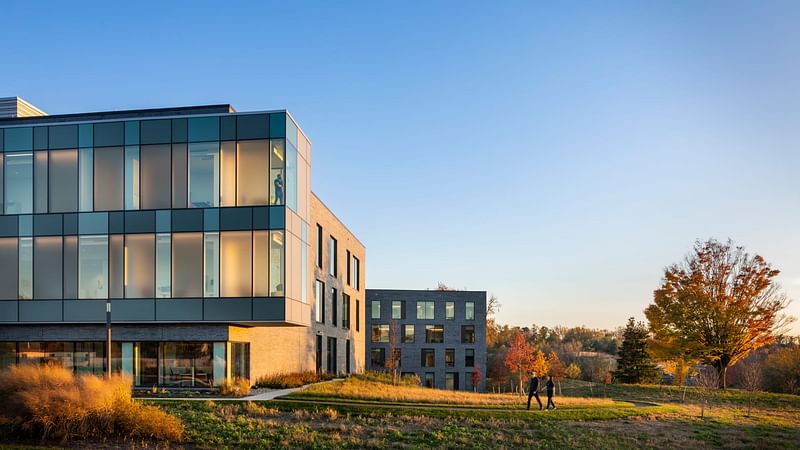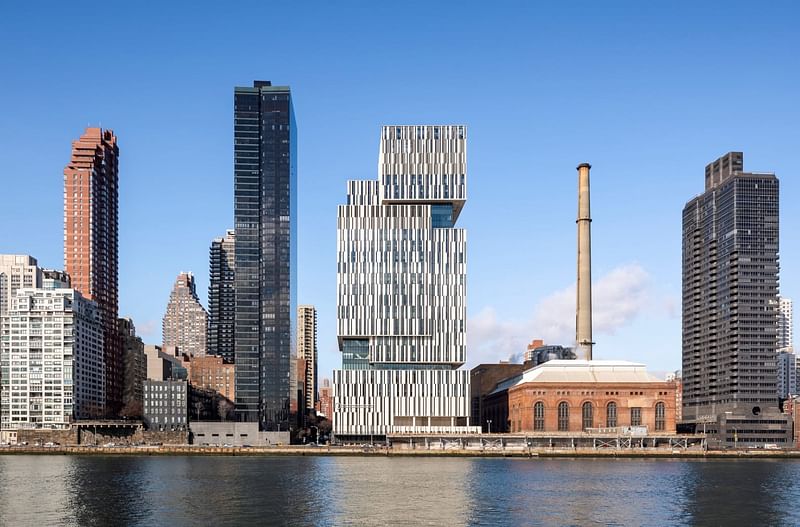AIA Healthcare Design Awards 2021 winners announced
By Niall Patrick Walsh|
Tuesday, Jul 20, 2021

Related
The American Institute of Architects (AIA) Academy of Architecture for Health (AAH) has announced the 2021 recipients for the AIA/AAH Healthcare Design Awards 2021. The six winning projects were chosen as exemplars for the latest trends in healthcare facility design, “recognizing cutting-edge designs that help solve aesthetic, civic, urban, and social problems while also being functional and sustainable.”
The 2021 edition of the awards is comprised of projects completed anywhere in the world after January 1st, 2016, as long as they were designed by an architect licensed in the United States or one of its territories. Eligible projects included healthcare building design, healthcare planning, and healthcare design-orientated research.
The six winning projects are listed below, along with an excerpt of the project citation. Full details of the awards are available via the official website here.

Category A Built: Less than $25 million in construction costs
Rainier Beach Clinic, Seattle, WA by Mahlum
"After reviewing patient surveys, clinical observations, and existing medical literature, the design team embraced the hypothesis that direct connections with nature can bolster both patient participation and staff presence. By following this evidence-based approach, the team arrived at a unique clinic layout that offers all patients equitable views of garden courtyards while still maintaining the necessary strict requirements for patient care team ratios and sightlines. Overall, the center's interwoven biophilic design strategies have shaped an immersive and therapeutic environment."

Category B Built: More than $25 million in construction costs
Penn Medicine Radnor, Philadelphia, PA by Ballinger
"Sustainability and the patient experience were two of the most critical design concerns for the four-story, 250,000-square-foot facility. Relying on evidence-based design throughout the process, the team facilitated rigorous planning workshops to inform its design decisions and ensure the layout would improve staff communication and efficiency. The facility’s flexible clinic modules allow the design to keep pace with shifting demands. Many configurations of the modules were tested during the planning stages, demonstrating a 38% reduction in patient travel time while nearly doubling the scope of patient care spaces."

Rancho Los Amigos National Rehabilitation Center, Downey, CA, by SmithGroup
"The new facility works as an indoor/outdoor recovery zone, smudging the lines between interior and exterior spaces so that rehabilitation can spill beyond the hospital walls, a significant benefit for patients who may be spending months or years in recovery. Expansive, dual-purpose outdoor rooms surrounded by healing gardens, terraces, and amphitheaters replace old concrete parking lots. The facility also includes a new wellness center, modernized hospitals, and a three-story outpatient center that has consolidated all ambulatory services under one roof for the first time."

The David H. Koch Center for Cancer Care at Memorial Sloan Kettering Cancer Center, New York, NY by Perkins Eastman in association with Ennead Architects
"The building comprises several smaller-scale facade elements that help break the massing into smaller volumes. That strategy has created a welcoming facility that is responsive to programmatic needs for openness and privacy. The team’s careful consideration of the floor plate requirements for the center’s diagnostic imaging environments—including one of the nation’s first MR-Linac suites—shaped the five lower floors. Above, the clinical floors support efficiencies for different service lines. While they were designed to feel and operate as neighborhoods of smaller physician practices, the clinical floors also foster collegiality and research endeavors. The building is crowned with several floors of academic offices, reflecting Memorial Sloan Kettering’s long history of collaboration between physicians and scientists."
U.S. Department of Veterans Affairs, Omaha VA Ambulatory Care Center, Omaha, NE, by LEO A DALY
"The center’s north facade is inspired by a rippling flag, guiding veterans and staff to the entryway. It wraps the waiting area, designed as one continuous space to promote social connections. The west facade, which encloses the clinic vestibule and pedestrian connector, uses multicolor glazing to evoke military ribbons. In the waiting area, a layered limestone wall guides patients on their path to their care environments. The wall’s form and materiality are reminiscent of the layers of soil veterans have tracked home during times of conflict and peace."
University of Cincinnati, Gardner Neuroscience Institute, Cincinnati, OH by Perkins&Will
"The team’s desire to respond to patient needs is evident in the institute’s unique facade. Composed of a specialized polyester fiber mesh, it controls heat and glare while allowing natural light to penetrate. Minimizing glare is crucial for neurological patients as it is visually disorienting. As it wraps the east, west, and south sides of the building, the polyester planes evoke origami, highlighting the building on a campus recognized for its mix of classical and modern architecture. While the innovative facade emerged from a desire to protect patients and improve performance, it has become a symbol of the health system’s synthesis of technical excellence and humane care."

RELATED NEWS Best new schools and learning centers selected for AIA's 2021 Education Facility Design Awards

RELATED NEWS KoningEizenberg, Leers Weinzapfel, and Wittman Estes among 2021 AIA Housing Award recipients


Share
0 Comments
Comment as :